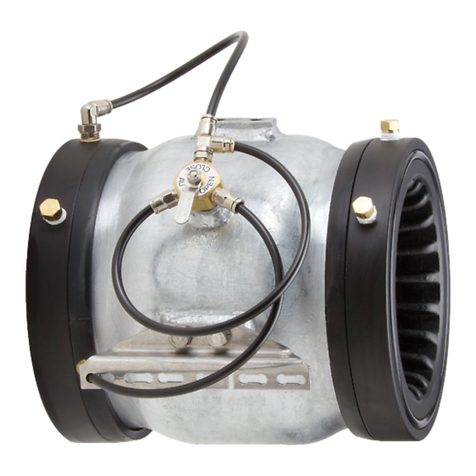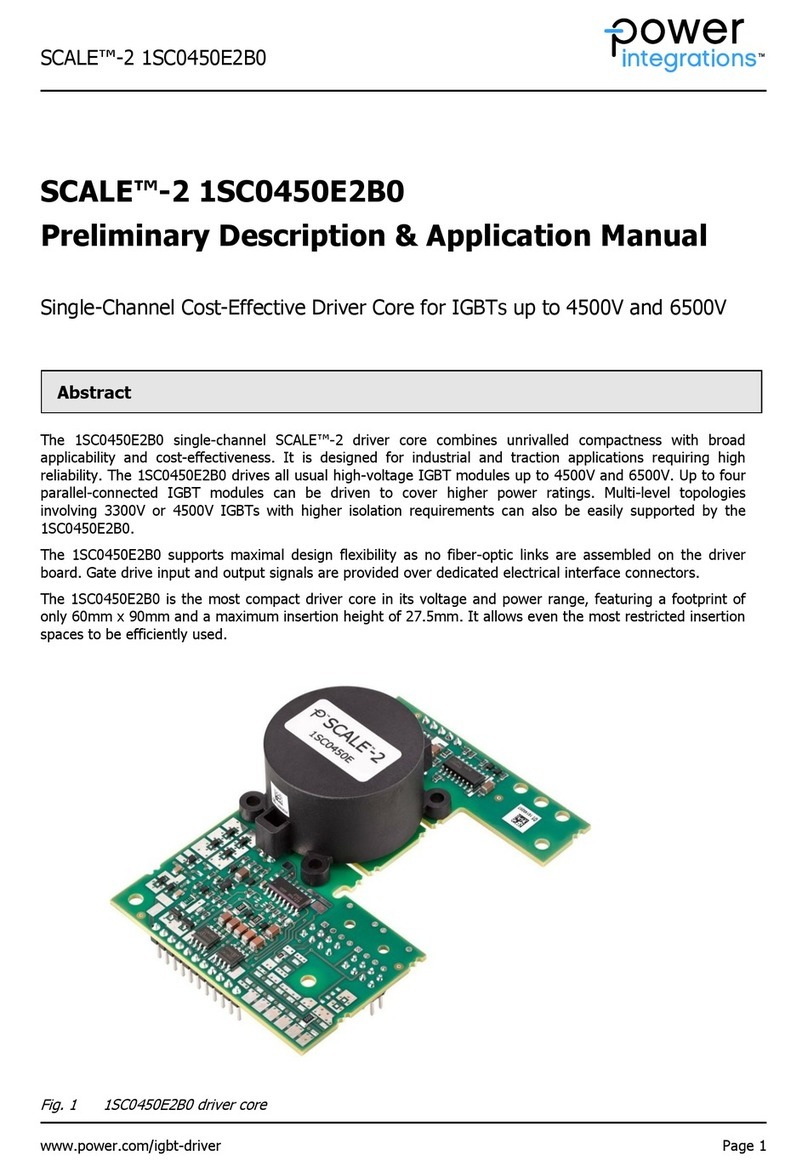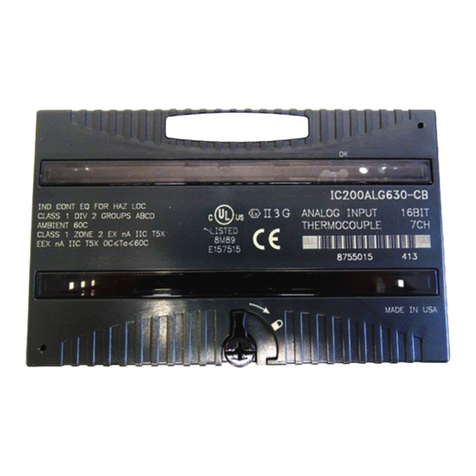TechnoVersions MeterMatch MM-02 User manual

MeterMatch™
Overview
The MeterMatch™ Model MM-02 by TechnoVersions LLC is for
making analog gauges more accurate, or to allow you to mix
and match different gauges and senders. It can be used with
many gauges that have resistive senders - such as common
fuel, oil-pressure and temperature gauges. In addition, it allows
you to have low and/or high set-points that will trigger a bright,
flashing LED indicator to alert if the gauge exceeds normal
values.
Note: If you are having trouble reading the small print of this instruction manual, go to the
TechnoVersions.com website and open the on-line copy that you can print out full size.
Theory of Operation
MeterMatch is wired between your sender (sensor) and your gauge. It reads the resistance of the
sender, then based on the calibration values, controls the current through the gauge to drive it to the
desired reading. It treats the input and output entirely separately, so it doesn't care if the input to the
gauge is scaled differently than the sender, or even if the sender signal is reversed - it can correct for
that. In the graphic above, prior to installation the green lines would be connected together.
MeterMatch interrupts that signal to process it and make corrections.
To calibrate MeterMatch, you first set the sender to a known value. For example, fill your fuel tank.
Set the MeterMatch to program mode, then with Up and Dn buttons, make your gauge read what you
want for that sender value. When you are happy with that, press the Save button, and the value is

- 2 -
remembered in the MeterMatch. Do the same process with the sender reading a value near the other
end of its range, and you are done. MeterMatch interpolates from these values to make the gauge
read proportionately at values above, below, and between the calibration values. If you know the
resistance of your sender, you can also calibrate to common values, even without the sender being at
that specific resistance. The calibration points are typically near the ends of the gauge limits, but can
be anywhere – for example you can have your only calibration points at 25% and 75%, and it will still
work, but won’t be quite as accurate outside of those points.
The basic process of having the gauge read properly from calibration points near each end of the
range is fine for most applications, but you can be more sophisticated if you wish. For example, what
if your fuel tank is large at the bottom, and small at the top? In this case, it won't read properly
throughout the range. MeterMatch provides two additional calibration points between the endpoints.
So, in this case, you could have an additional calibration point where the tank changes size. Another
use for these points would be if your tank is cylindrical (like a truck fuel tank) so the gauge is
inaccurate at both sides of center. Here, you can add additional calibration points (for example at
30% and 70%) and the accuracy is drastically improved
The calibration data inside MeterMatch is stored internally in non-volatile memory that is maintained
even when power is removed.

- 3 -
Installation
To install and calibrate your MeterMatch, you will need to expose the circuit by removing the small #1
Phillips-head screw in the bottom center of the enclosure. Take care that the circuit board doesn't
touch any metal which could short things out, and when finally installed, make sure it is in a dry spot
that doesn't get overly hot.
It is wired by connecting to a screw-terminal strip inside. You will need a small straight-blade
screwdriver (tip width less than .15").It accommodates wire sizes from #14 AWG to #22 AWG.
Wires in the mid area of this range, for example #18 AWG, work well.
MeterMatch only requires four wires with signals that are usually available near the back of the
gauge. The signals are connected to the terminal strip positions:
Pin 5
Alarm signal (typically not used)
Pin 4
From Sender (input to MeterMatch)
Pin 3
To gauge (output from MeterMatch)
Pin 2
Ground – ensure that it is well grounded
Pin 1
+12V (switched by ignition) – requires only a few mA
Calibration
Once wired, it is necessary to calibrate your MeterMatch to tailor it to your sender and gauge. As
shipped, default values are in place for switch positions 1 and 4.
The rotary switch Ѳpositions are used as follows:
0
Normal operation after calibration
1
High calibration point
2
Mid-high calibration point (typically not used)
3
Mid-low calibration point (typically not used)
4
Low calibration point
5
Alarm high calibration point (typically not used)
6
Alarm low calibration point (typically not used)
Note: If you are having trouble seeing the arrow on the rotary switch, you can always find the 0
position since the LED is off in that position, and on for all others.
In addition to the terminal strip and rotary switch, you will find three push-buttons:
Up
Moves the meter needle one direction
Dn
Moves the meter needle the other direction
Save
Stores the calibration point presently selected

- 4 -
Standard calibration process (sender resistance not known):
Note: Using this technique, it’s necessary to have the sender matching the gauge position being
calibrated. For example, the tank needs to be empty when making the gauge read empty, full when
calibrating full. It doesn’t need to be calibrated at the extremes, could be ¼ and ¾ for example, but
best accuracy is achieved when near the end-points.
1. Set your sender to a point near one end of the value being measured (we'll start at the top in this
example, but order is unimportant).
2. Set the rotary switch Ѳto position "1" (High Calibration Point).The LED in MeterMatch will light
up.
3. Use the Up/Dn buttons to make your gauge read the appropriate setting for the present sender
output. Depending on the gauge, the buttons may work backwards, but don't worry about that - just
make the gauge read the desired value. Some meters are well-dampened so this process can take a
little time. It doesn't hurt to tap lightly on the gauge too. If you press and hold an Up/Dn button, the
gauge signal from MeterMatch will continually move. It takes about fifteen seconds for the
MeterMatch to move over its entire range with one of the buttons held down continuously.
4. Press the Save button to save this calibration point. The MeterMatch reads the sender, then
saves that value, along with the gauge signal, into its internal memory. The LED on MeterMatch will
go out momentarily to indicate that the values are being saved, then turn back on.
Repeat these steps but with the sender set to a position for the other end of measurement, the rotary
switch Ѳto "4" (Low Calibration Point), and then use the Up/Dn buttons until gauge is reading
appropriately, then press Save again.
Finally, set the MeterMatch rotary switch Ѳback to "0" (Normal Operation), put the cover back on,
and installation is complete.
You can go back and reset any point using the same process, it will simply over-write the data for that
point stored previously. If you would like to erase a point (for example a point or limit you don't want
to use any more): with no power applied, set the rotary switch Ѳto the position reflecting the point
you want to erase, hold down the Save button, then turn power back on.The LED will blink.
Alternate calibration process (sender resistance known):
If you know the resistance of your sender, you can use that to help do calibration in place of making
the actual sender be in different positions during the calibration.You will need to know the sender
range (end-points) in Ohms. For example, the sender might be 240 Ω(Ohms) when the reading is
low, and 33 Ωwhen the reading is high. If you have this data, there are two ways that you can use it
for calibration:

- 5 -
Method 1: Connect a resistor (available at places such as Radio Shack) of the desired value on the
MeterMatch sender input pin (pin 4) to ground, then perform calibration at that point just as with the
standard calibration process previously shown.
Method 2: You can have MeterMatch calibrate to some internally stored resistance values. To use
these, do the following:
1. Power up MeterMatch
2. Set the rotary switch Ѳto zero (normal operation)
3. Press and hold the Save button. The LED will illuminate.
4. While the Save button is being held down, press the Up button, the number of times shown in this
table. Each time you press the Up button the LED will blink the number of times that it has been
pressed. For example, after you have pressed it twice, it will blink twice. You can start over at any
time by releasing the Save button.
Number of "Up" Button
Pushes
Sender Resistance Simulated
(Ohms)
1
0
2
10
3
33
4
73
5
90
6
180
7
240
5. Release the Save button, then use the standard calibration procedure: rotary switch Ѳto which
point you are setting, Up/Dn buttons to make gauge read the desired setting, then Save. When the
Save button is pressed (and the rotary switch Ѳis not set to 0), MeterMatch will use the resistance
value you just entered, and then reset itself to back normal operation.
Calibration Checking and Enhancement
Feel free to use a combination of these calibration methods. For example, you might initially calibrate
to the published resistance values of your sender, then when the opportunity comes to improve
accuracy, recalibrate a point. Using the fuel gauge, for example, recalibrate the end-point when you
run out of gas, or fill up the tank. Whenever you return to a position of the rotary dial, you can over-
write the data that was previously programmed.
Resetting Data in MeterMatch
If you would like to reset the MeterMatch back to factory defaults: (1) remove power from the unit, (2)
set the rotary switch Ѳto zero, (3) press and hold the Save button, and finally (4) reapply power to
the unit and wait until the power-up LED blinks, indicating that power-up is complete. This presets
the low and high values (switch positions 1 and 4) to values typical for after-market gauges, and sets
other internal settings to defaults.

- 6 -
Voltage Correction
Most gauges are connected to a voltage regulator in the instrument wiring so that they get a constant
voltage whether the engine is running or not. However, if this is not the case, when you calibrate your
gauge at one voltage (for example, engine not running, battery at +12.5V), then start the vehicle and
the voltage rises (for example to +13.8V), the gauge reading might change significantly. If you run
into this, MeterMatch has an automatic voltage correction feature that corrects the reading for
different voltages. To enable this feature: (1) remove power from the MeterMatch, (2) set the rotary
switch Ѳto position "0" (normal operating), then (3) press and hold the Up button while applying
power to the MeterMatch. Hold it until the LED blinks after power is applied. MeterMatch will
remember this setting in future use. If you wish to remove the voltage correction feature, repeat the
same process, but hold the Dn button rather than the Up button. Note that if you change this setting,
the gauge may need to be recalibrated with the new setting.
Reading Averaging
In the default mode, the MeterMatch averages readings to make the needle move more slowly. This
is not necessary on older, slower-responding gauges, but can come into play with more modern
gauges that have less internal dampening. This feature can be turned on and off with a power-up
sequence: (1) remove power from the unit, (2) set the rotary switch Ѳto seven, (3) press and hold
the Save and Dn buttons, and finally (4) reapply power to the unit and wait until the power-up LED
flashes, indicating that power-up is complete. Each time you do this, it will toggle reading averaging
between off and on.
Early Ford/Mopar Gauges with Mechanical Regulators
If you are controlling a gauge that is powered by a mechanical voltage regulator in the dash panel
(such as early Ford and Chrysler products), you can reset the MeterMatch to near-correct values by
performing the reset operation: (1) power off, (2) setting the rotary switch Ѳto seven, (3) holding
down the Save button and finally (4) applying power until the LED blinks.This will also turn on
Voltage Correction which is necessary when using a vibrator-type instrument voltage regulator.
If you have an electronic regulator in your vehicle, Voltage Correction should be turned off. You can
set to near-correct values for Ford/Mopar gauges with electronic regulators by resetting the
MeterMatch exactly as above, but hold both the Save and Up buttons down, rather than just the
Save button.
Both Ford/Mopar resets populate switch settings 1, 2, and 4. 2 is for ½ tank

- 7 -
Installing/Programming an Alarm Indicator
An LED Alarm Indicator can be mounted near the gauge being controlled. When activated, the
MeterMatch produces a flashing on/off signal to the LED to alert you to check the gauge. The circuit
will generate approximately 25mA across the LED. It is an open-collector output with 400 Ω series
resistance.
LEDs typically have a longer lead for the anode (+), and shorter lead on the cathode (-) terminal.
Connect the LED cathode to Pin 5 of the terminal strip, and the LED anode to +12v switched, such as
Pin 1 of the MeterMatch.
It won't hurt anything if you accidently reverse the alarm wires, but the LED won't light.
Pin 5 terminal strip
LED negative (cathode)
+12V switched
LED positive (anode)
You can program the upper and lower alarm points with rotary switch Ѳpositions 5 and 6
respectively. Set the rotary switch Ѳ, use the Up/Dn buttons to set the desired gauge reading at
the set-point, then press Save. MeterMatch doesn't care what value the sender is at while
programming the alarm points - it is only interested in what you make the gauge read with the Up/Dn
buttons. As a result, ensure that you have calibrated your gauge accurately (rotary switch Ѳ
positions 1-4), or your alarm will not be accurate either.
These points can also be erased using the same procedure as normal calibration points. Depending
on how your gauge works, you may find that the low and high alarm set-points are reversed in
operation from what you expect. If that's the case, simply reverse the calibration (use high for low
and vice-versa).
If you have more than one MeterMatch installed, you can logic "or" the LED signals so that if any of
the alarm signals become true, they will set off a single LED. Simply connect the LED negative
(cathode) in parallel to each MeterMatch (Pin 5).
Return Policy
If a MeterMatch unit does not work properly in your application, and is not damaged, TechnoVersions
will allow return for full refund of purchase cost, exclusive of shipping charges. Claim for such must
occur within 30 days of product shipment from TechnoVersions. Ship the unit back to
TechnoVersions along with a description of the problem and proof of purchase. TechnoVersions will
remit the refund via US Mail or PayPal (at TechnoVersions discretion) within 10 working days of
product receipt.

- 8 -
Limited Warranty, Terms and Conditions
TechnoVersions LLC provides a limited warranty for MeterMatch. If a unit should fail within 180 days
from time of shipment from TechnoVersions, it can be returned for repair or replacement at
TechnoVersions discretion. Products subject to abuse (as determined by TechnoVersions) are
excluded from this limited warranty. TechnoVersions LLC makes no other claims as to suitability and
excludes any liability for direct, indirect or consequential damages. Exclusive remedy is limited to
product replacement or repair. Cost of shipping the returned product to TechnoVersions is at the
customer’s expense, but the replacement/repaired MeterMatch will be shipped to the customer via
USPS or UPS ground at TechnoVersions expense, except for shipments out of the US, in which case
TechnoVersions shipping cost is limited to the cost of domestic shipments. When returning
MeterMatch to TechnoVersions, include a description of the fault to help facilitate repair. Risk of
damage/loss during shipping becomes the customer responsibility once the product is delivered to a
common carrier by TechnoVersions
MeterMatchTM Specifications
Size
1.85"x2.4"x0.93"
Weight
1.2 Oz
Connections
1x5 screw terminal strip accepting #14-#22 AWG wires
Input Power Voltage Range
7 Vdc – 16 Vdc
Sender Input
Ohmmeter reading of sender input to ground
Max current through sender 50mA
Max voltage at sender input: 5Vdc
Resolution approximately 1 Ωfor readings less than 1 k Ω.
Range 0-3,000 Ω
Gauge output
Constant-current sink
Full output range resolution better than 1%, actual resolution depends upon
working range of gauge
Input/Output Translation
Meter output current based on linear interpolation of sender resistance calibration
points.
Four calibration points provided, minimum of two necessary for operation.
Alarm LED Output
Programmed flashing
Open collector output with approximately 400 Ω series resistance between output
and ground
Controls
Up, Down, Save buttons
8-Position rotary switch
MeterMatch MM-02 Instruction Manual Rev G (Rev 7/2020)
Table of contents
Popular Control Unit manuals by other brands
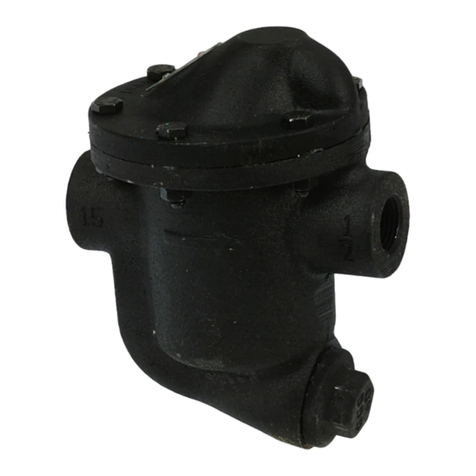
Spirax Sarco
Spirax Sarco HM Series Installation and maintenance instructions

Contec
Contec CNT24-2GY user guide
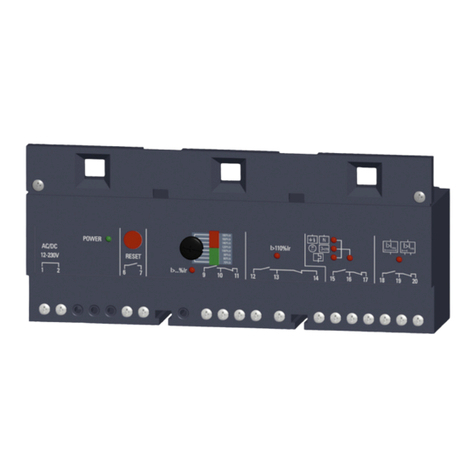
Siemens
Siemens 3VT9500-6AE00 operating instructions

Watermark
Watermark Reefe rainpro RM1500-2 Installation and operating instructions

BERMAD
BERMAD 450-60 manual
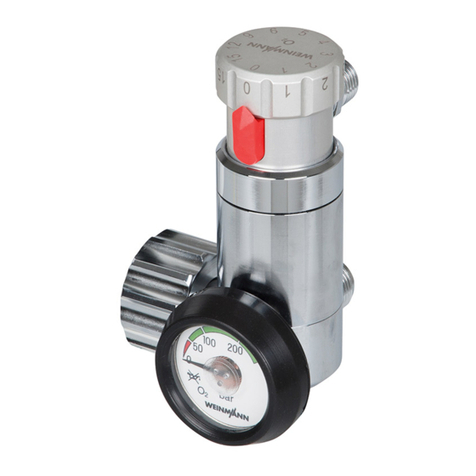
Weinmann
Weinmann OXYWAY Instructions for use
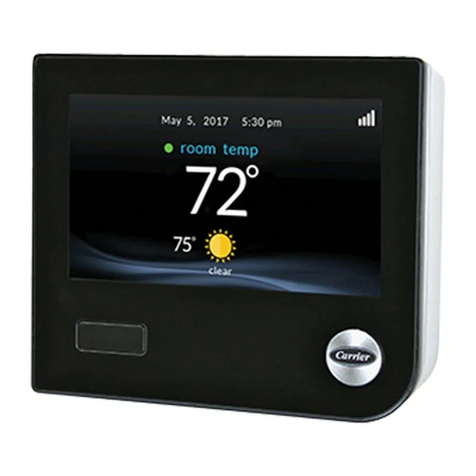
Carrier
Carrier INFINITY SYSTXCCITC01 owner's manual

Wandel & Goltermann
Wandel & Goltermann OLA-35 Description and operating manual
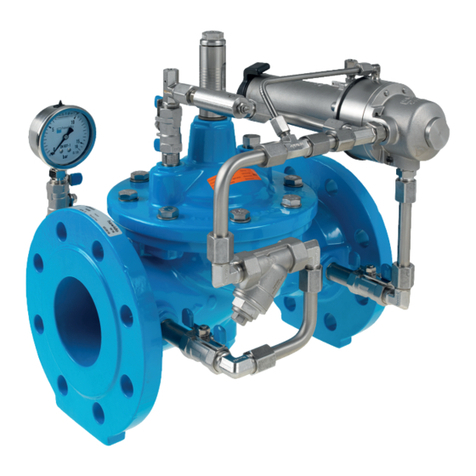
Hawle
Hawle HAWIDO 1402 manual
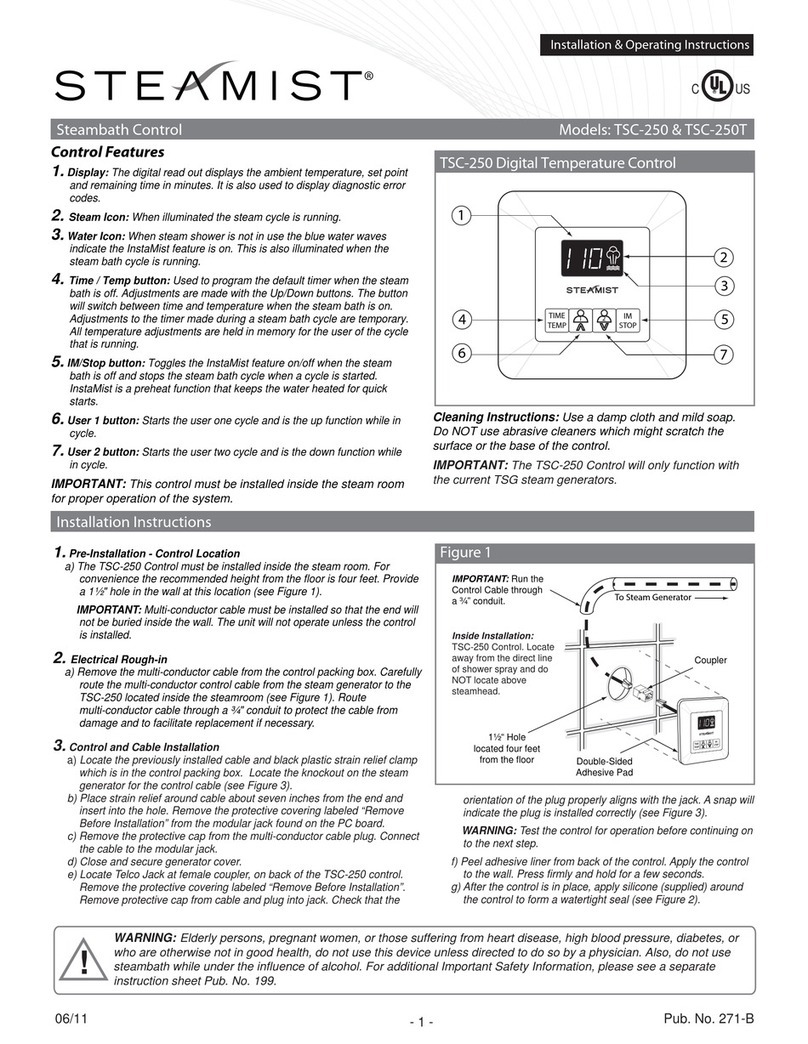
Steamist
Steamist TSC-250T Installation and operating instructions
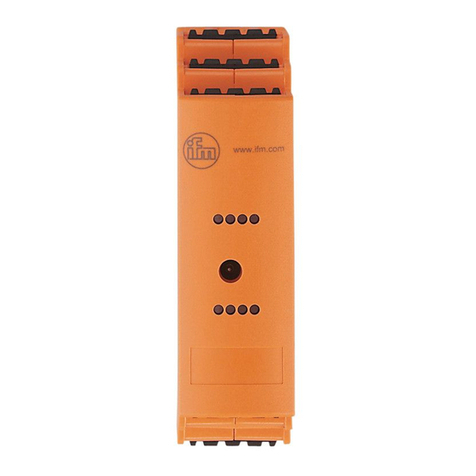
IFM
IFM SmartLine AC3218 operating instructions

Honeywell Home
Honeywell Home P5300 Series installation instructions
